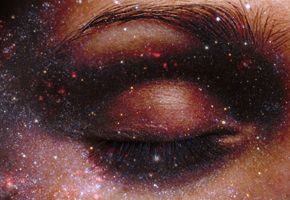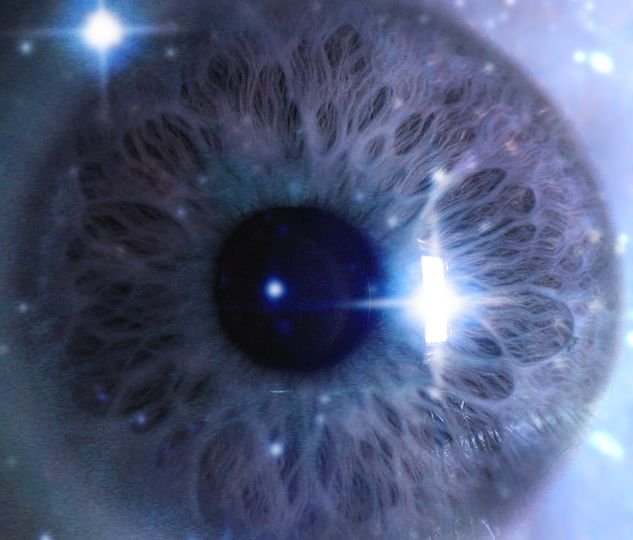What Are Dreams?

Do you ever write down your dreams?
Do you ever go back and read them and find that you have no memory of the dream anymore, even though you wrote it down?
When you read old dreams does it ever shock you?
Does your dream journal ever leave you realizing that your subconscious was onto something substantial and critical in your life when things came to light, years later?
I believe that dreams are something more than nonsense, something vital to understanding the massive amount of material observed by our senses during wake. Dreams occur for reasons that are deeply significant to the dreamer. I don't believe in Astrology, the Zodiac, Fortune Tellers, Mind Readers, or Symbolic Dream Interpretation but I know that dreams are a source of real data with real meaning. I think that dreams are a vital part of how the mind works, and of who we are as sentient beings and the decisions we come to make every day of our lives.
I think we can gain scientifically viable data from the recording of our dreams. Unfortunately, any experimental data collection is challenged by the fact that there is no objective way to record dreams. We are dependant on our delicate memories, our ability to communicate, and our willingness to be honest about a dream.

In 1953, REM was discovered. In 1893, The American Journal of Psychology published an article written by Wellesley College Psychology Instructor, Maby Whiton Calkins, Statistics of Dreams. In her experiment, two subjects recorded the details of their dreams over the course of 6-8 weeks. During the experiment, the use of an alarm was discontinued because it so often leads to the loss of memory of the dream. 73 years later, Psychologist Calvin Hall, Jr. published The Content Analysis of Dreams, in 1966. Hall began three decades of dream studies in the 1940's and collected thousands of dreams for analysis. His work concluded that dreams contained visual imagery more frequently than any other sensory data. He also discovered that the majority of dreams were from a first-person perspective and that the events contained were most often out of the dreamer's control.
In 1969, David Koulack, Ph.D., published the article Effects of Somatosensory Stimulation on Dream Content. This experiment involved three different types of stimuli: water-spray, light, and pure tone, presented to subjects during their REM stage of sleep. The results were that the water stimulus was incorporated 42% of the time, the light was incorporated 23% of the time, and the tone was only incorporated 9% of the time. In 1981, The Journal of Abnormal Psychology published Incorporation of Concern and Nonconcern-Related Verbal Stimuli Into Dream Content. The article discussed the results of an experiment in which seven male undergraduates were presented with a variety of verbal stimuli during sleep stages 2, and REM. This experiment demonstrated that sleeping subjects are capable of making "more complex and subtle cognitive discriminations" about the environment in which they're sleeping. This conclusion was reached because the experiment found that the subjects could discern between verbal stimuli. Verbal stimuli considered to be of concern would be incorporated into the dream while verbal stimuli deemed of no concern made no appearance in the dream. However, I don't know how the significance of verbal stimuli was determined in the experiment.
In 1998 a research project was conducted, Role of REM sleep and dream affect in overnight mood regulation: a study of normal volunteers, by Cartwright R, Luten A, Young M, Mercer P, Bears M. The experiment involved 60 subjects deemed to have stable moods. The Profile of Mood States (POMS) was utilized as a scale to measure each subject before sleep, and again after waking. The experiment proposed to test whether dreaming was an aid to the regulation of negative moods and simply found that dreaming overnight does affect mood. However, there are too many variables for this experiment to have a beneficial conclusion because we cannot determine if the mood affected the dream or if the dream affected the mood.
In 1999 S. Schwartz wrote a Ph.D. thesis entitled Statistical and neuropsychological exploration of dream phenomena through texts and images of dreams in which he discusses the phenomenon of censorship that occurs when reporting dream content, as well as the difficulty transforming sensory and emotional representations into verbal representations. In 2001 the magazine Science published an exciting article,Sleep, learning, and dreams: off-line memory reprocessing, by Stickgold R., Hobson JA., Fosse R., Fosse M. This article discusses the ability to utilize neuroscience technology, molecular genetics, and neurophysiology to study the role of sleep in "off-line memory reprocessing, as well as the nature and function of dreaming". A body of research is providing evidence that supports theories that sleep, and dreaming, play a vital role in learning and memory processing, including the development of problem-solving skills.
In 2002, Raymond I., Nielsen TA., Lavigne G., and Choinière M. published Incorporation of pain in dreams of hospitalized burn victims. In the study, they evaluated the frequency of pain experienced in the dreams of burn victims. They already had data on the regularity of pain experienced by healthy subjects, and while it does occur, it's frequency is quite low. 30% of the subjects in this study reported pain dreams which lead to less adequate sleep and higher pain intensity. The study concluded that people experiencing pain are more likely to have pain incorporated into dreams and that this can lead to a cycle of pain-anxiety-sleeplessness.
In 2003 Schredl M., and Hofmann F. worked to analyze the Continuity Hypothesis which states that the activities experienced in dreams are a continuation of activities experienced in real life. It is, in my opinion, a weak hypothesis because while it occasionally applies, it makes no definitive statement regarding why an activity may present itself during dreaming and does not account for the vast amount of activities experienced in dreams that have no basis in reality. In their study, they concluded that "the continuity hypothesis in its present general form is not valid and should be elaborated and tested in a more specific way."
In 2004 Schredl M., Ciric P., and Götz S, Wittmann L. published Typical dreams: stability and gender differences. In this study, they examined the content and frequency of content in dreams to determine if there was any significant mathematical relationship in the rank and order of common themes. They also looked specifically for gender differences in the content and frequency of dream themes. They discovered that the relative frequencies of 55 dream themes were stable amongst 444 participants who answered A. L. Zadra and T. A. Nielsen's (1997) Typical Dream Questionnaire. Their findings supported the current data which stated that males dream of physical aggression more often than females.
In 2005 The threat simulation theory of the evolutionary function of dreaming: Evidence from dreams of traumatized children was published by Valli K., Revonsuo A., Pälkäs O., Ismail K.H., Ali K.J., and Punamäki R.L. The study involved analyzing dream reports from two groups of Kurdish children. The findings were that the group of severely traumatized children had dreams more often containing threatening events. This data supports the theory that dream consciousness is an ancient biological defense mechanism. According to this study, "Children who live in an environment in which their physical and psychological well-being is constantly threatened should have a highly activated dream production and threat simulation system, whereas children living in a safe environment that is relatively free of such threat cues should have a weakly activated system." The frequency of nightmares experienced by people with PTSD also supports this theory.
In 2011, two studies were published involving the dreams of paraplegic subjects: Waking and dreaming: related but structurally independent. Dream reports of congenitally paraplegic and deaf-mute persons by Voss U., Tuin I., Schermelleh-Engel K., and Hobson A. and Walking dreams in congenital and acquired paraplegia by Saurat M.T., Agbakou M., Attigui P., Golmard J.L., and Arnulf I. Both studies found that paraplegic patients dreamed of walking as often as the non-handicapped control groups. Saurat's group proposed that "a cerebral walking program, either genetic or more probably developed via mirror neurons (activated when observing others performing an action) is reactivated during sleep."
More recent studies theorize that those who don't dream are at risk for depression. I find this theory quite weak because it does not account for the connection between night terrors and PTSD. This theory also lacks to account for the possibility that we all dream, but don't all remember our dreams. The only proof of dreams we have is limited to the eye-witness accounts of dreamers, and that's only possible if we remember our dreams. Those of us who do remember our dreams know how elusive those memories are in the first place.
Great write up on a fascinating subject.
Due to health reasons I am a very light sleeper and every night I experience very vivid dreams. I have never bothered to write them down but I do believe they help to sort out your memories and feelings/emotions about certain events in your life.
I still have VIVID dreams...way more to them than anyone will ever know or be able to explain with science in our lifetime.
Beep! Beep! This humvee will be patrolling by and assisting new veterans, retirees, and military members here on steemit.
@shadow3scalpel will help by curating posts from a list of members maintained by @chairborne and responding to any questions replied to this comment.
I agree with @gmuxx, great write-up! Dreams have always fascinated me mainly because we know so little about them and they are universal.
Congratulations @kdneeley! You have completed some achievement on Steemit and have been rewarded with new badge(s) :
Click on any badge to view your own Board of Honor on SteemitBoard.
For more information about SteemitBoard, click here
If you no longer want to receive notifications, reply to this comment with the word
STOP